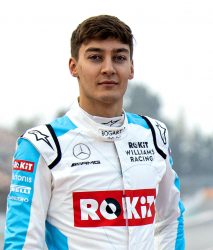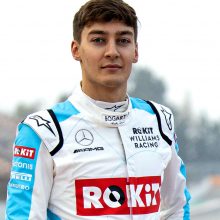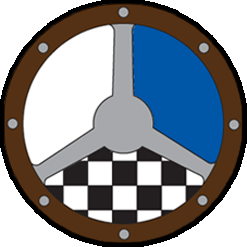Ask a pro
Receive advice directly from today’s top stars


George Russell
Williams F1 Driver
George Russell is the current driver for the Williams F1 team and 2018 FIA F2 champion.
Russell’s debut F1 season in 2019 saw him out-qualify experienced teammate Robert Kubica at every race weekend, becoming one of the few rookie drivers to achieve this.
His journey to F1 follows a successful career in karting and strong seasons in FIA Euro F3, after which Russell won the 2017 GP3 championship and was signed on to the Mercedes F1 Young Driver Programme.
In 2018 he stepped up to FIA F2 against karting rivals Alex Albon and Lando Norris who he managed to beat and, in the process, earned a seat with Williams in F1.
George Russell answers your questions!
-
Cillian Kavanagh
What has been the toughest part of your journey so far? And do you think there’s an element of being in the right place at the right time to get into F1 or if you have the talent you will get there?




The toughest part of my racing career was probably when I was younger. I was travelling up and down the country with my mum and dad and, after having a tough weekend and making mistakes, I felt like I was letting them down to a certain extent as they were putting a lot of energy into me.
Another example would be my first season in European Formula 3, which was a very tough year for me. But I learnt so much from that and it made me a stronger driver going into GP3 and Formula 2 where I won the championship. I would always say those tough moments make you a stronger driver.
There’s always an element of right place, right time. In Formula 1, there’s only 20 seats on the whole grid but ultimately if you are talented enough and you put the hard work and effort in, the right people will know your name. It’s then down to you to keep performing and not give the team bosses any other choice but to get you on their books.
-
Alex Anderson
How do you find consistency and speed when changing F1 car from year to year?




I think as a racing driver in order to always get the most out of your equipment you have to be adaptable. There are no two laps, no two sessions or no two races that are the same. Every time on track you’ve got different tyres, different track temperature, air temperature, wind direction. You also might have a car in front of you that is causing a bit of dirty air, or there might be other moisture on the track. Therefore, you need to go into a session with an open mind and to be ready to adapt.
Obviously you need an idea in the back of your mind of the way you need to drive to go fast, but ultimately if the car is acting in a certain way as a driver you have to react to that by changing your driving style to get the most out of it. I think that’s what the true greats of the sport have always done.
-
Iman Hansra
What are the differences in driving style required for a race stint compared to a qualifying lap, and is the transition between the styles sub-conscious for a driver?




When I first started my Formula 1 career, it wasn’t sub-conscious. I was really thinking about how to maximise and manage a qualifying lap, versus managing a race lap.
In a race you have to very often lift and coast to manage the fuel level, as that’s the most efficient way to drive the race. You may have to think about managing your tyres if you are doing a long stint on them, maybe managing in certain corners to keep the temperature in the tyre if it’s a cold track or take the temperature out of the tyre if they’re overheating. You’ve got to be ready to manage that. Whereas in a qualifying lap, it’s pretty much full beans, everything you’ve got and try to wring everything out of it.
-
Jack Sparshott
How do you stay motivated to keep fit and work out? Does it start becoming a chore?




The way it motivates you is when you’ve had a difficult race where you think that your potential lack of fitness hindered your performance. I remember a European Formula 3 race at Zandvoort in 2015. Prior to that moment I never used to do huge amounts of training, I’d never had difficulty from a physical perspective, so I didn’t really feel the need to do it. It was only in this race where there were lots of high-speed corners and I couldn’t really hang on. It really affected my performance and I knew from that moment on that I never wanted to be in that position again.
When I jumped into an F1 car and tested the Mercedes for the first time, I did over 100 laps in one day around Budapest in 40 degrees heat and it was absolutely knackering. I knew that when I got in to F1, I could not afford to let my fitness be a factor in to why I couldn’t perform to my optimal. You only get one chance in F1, so that’s what motivates me.
-
Craig Roberts
Are there any exercises at home that you would recommend for staying in shape?




Something that is very important for us drivers, and for everybody really, is core strength. We’re going through corners at 200mph and your body is being thrown around, so it’s important to have good stability from the core.
Your obvious exercises are your sit-ups, your front planks, your side planks. I often add a bit of weight on the side or rotation whilst doing a side plank to make it a little harder. You can even simply put your feet higher than your head, which always increases the intensity.
-
Warren Burton
Being in good physical shape is important for racing drivers, but do you use eye exercises?




We don’t do specific eye training, but we instead do a huge amount of cognitive exercises. A lot of the fatigue from doing a Formula 1 race distance comes from the mental side. Having to think about where to brake, how much speed to carry through a corner, when to get on the throttle, how to manage the tyres, the engine, the brakes, talking to your engineer, trying to attack the car ahead, or where to defend from the car behind is incredibly draining.
In a gym session we often integrate playing certain mind games on an iPad or throwing reaction balls at the wall or off the floor, to really try and put the mind through its paces once my heart-rate is already really high from physical exercise.
-
Alice Zigliani
In your opinion, what is the importance education have in a driver’s life and career?




I believe education is very important. Ultimately racing drivers need to be fast but, if you don’t come across well as a person teams will find an excuse not to take you. If you are on the other side of the coin and do your best to learn, not only at school but in the junior ranks of motorsport, understand the car, do your best to come across well and dress well, often the teams will find an excuse to take you. I think it’s very important.
-
Adrian King
How do you deal with moments of high stress and anxiety?




I’ve been very fortunate to have a good team around me. There are a few main people I see either prior to, or just after a qualifying session or a race when the stress is very high. Having these people around me who understand me, understand the sport, and allow me to offload on to them quite often, is a way to help me keep calm and focused.
-
Shivanee Ravi
How do you get over a particularly bad result?




There’s always a lot of frustration if you’ve underperformed or if things haven’t gone your way. It’s hugely frustrating but I always try and focus straight away on the next event. I start pinpointing the mistakes I made, and the mistakes we made as a team from the previous event, understand why they happened and make sure they don’t happen again. As I mentioned in one of my earlier answers, quite often the particularly bad moments make you a stronger driver and a stronger person to a certain degree.
You’ve always got to try and find the positives in a negative situation and if you have messed up, use that as a lesson to say: “I am not going to make that mistake again.”
-
Dylan Avery
How are you finding esports as a bit of ‘filler’ in between driving the actual car? Do you see it as a route into actual racing?




Esports is the best thing us racing drivers have to drive at the current time. It’s not quite the real thing as you don’t have that adrenaline, that sense of speed, the thrill of when you go through a high-speed corner flat out as you do in real life. I’m enjoying it and I’m having fun with my mates, but it doesn’t replace the real thing and I’m greatly missing driving in reality.
I think if you’re a top esports driver, you will be able to jump into a race car and know the basics from the beginning in terms of your racing lines, how to brake, where to brake, how to carry speed etc. Racing in karts from the age of seven or eight though, your body learns about the sense of speed, the feel of the tyres and the kart underneath you and that’s incredibly important for any driver. When your sat in your living room playing a computer game you don’t get any of this feeling at all.
 Road Racing Drivers Club
Road Racing Drivers Club
 Share
Share







